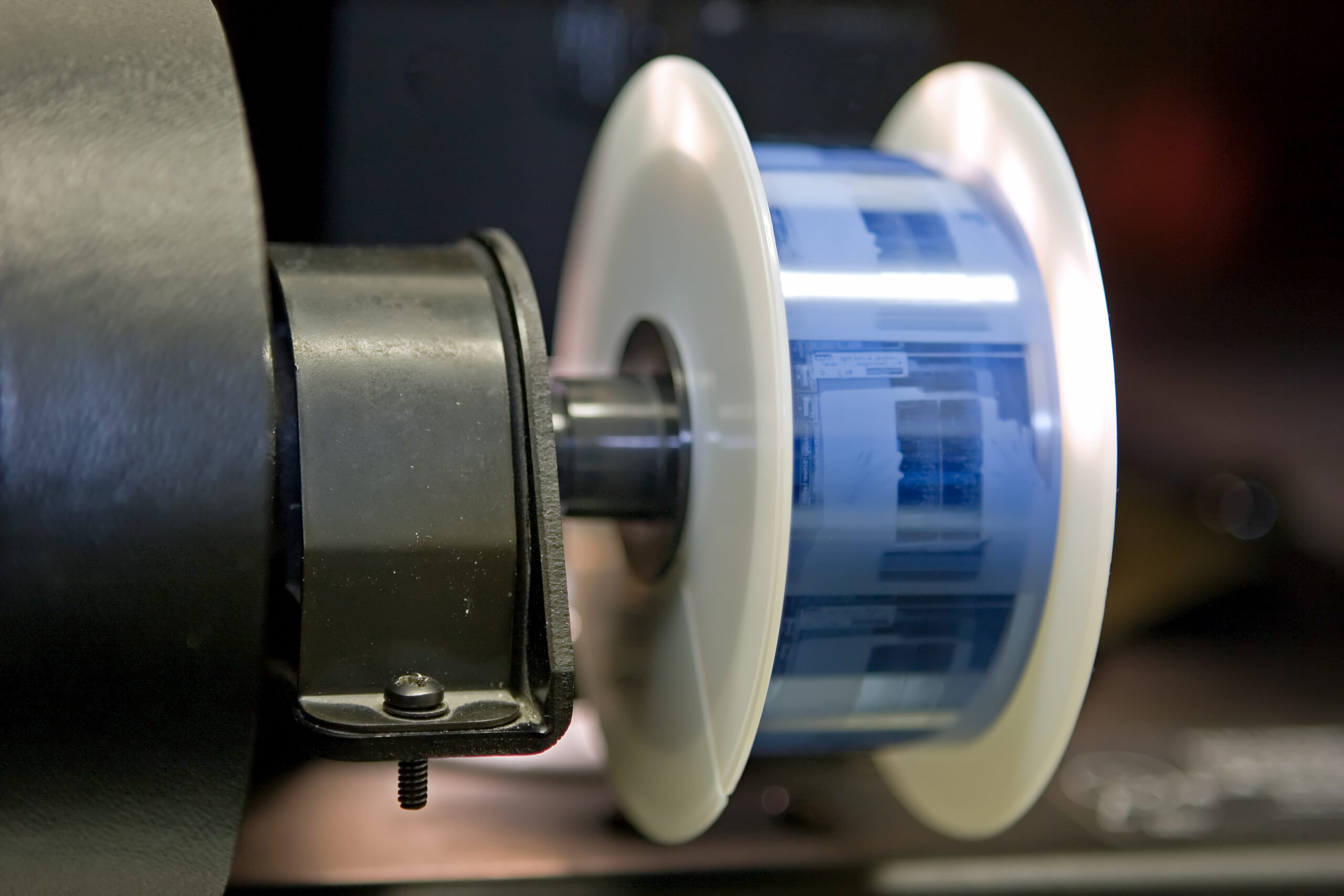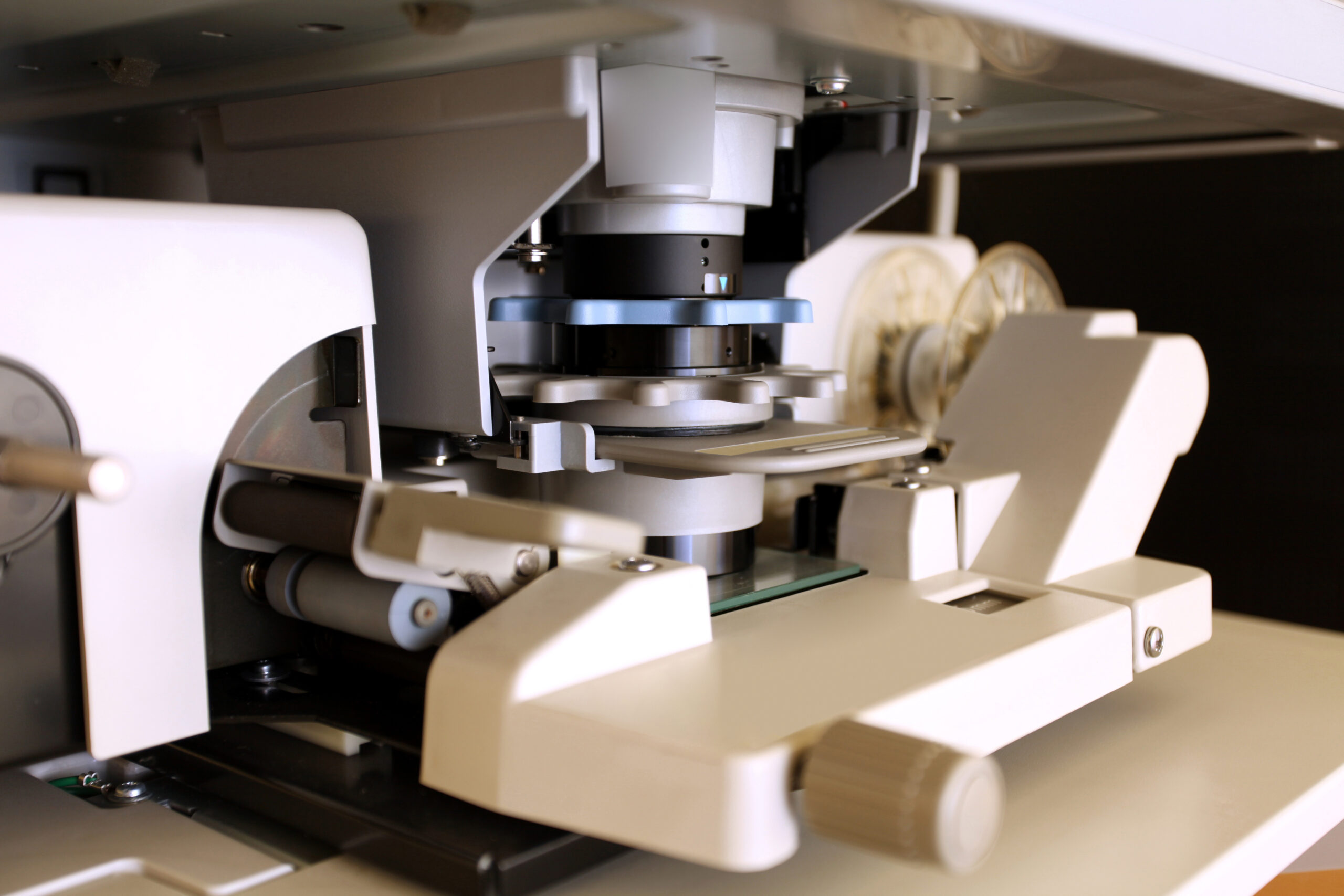Microfilm & Microfiche
We scan and convert microfilm & microfiche images and transform them into a digital format that can be easily stored, retrieved, and managed.
Reel microfilm and microfiche (a flat sheet of film containing multiple micro-images reduced from the original) were popular methods of document storage and reproduction for several decades. During the 1990s they were largely replaced by optical disc technology.
- STORAGE:
While a well-stored microfilm reel or microfiche sheet has a potentially long shelf life, storing such record formats in a box and stashing them in the closet is extremely risky.
- DIFFICULT TO RETRIEVE AND USE:
The retrieval rate is slow and it’s very hard to update. Only one person at a time can see the images covered by the roll of film, and information must be indexed properly.
Digitization supports longevity of analog heritage assets by increasing security, accessibility and preservation for future generations.
Microfilm

Microfilm is a 35mm film on which printed materials are photographed at greatly reduced size for ease of storage. The digital lens on the microfilm reader enlarges the image, allowing you to read the contents.
Microfilm has been a reliable tool for archival preservation since the 1920s due to its reliability and space optimization. This versatile technology scans physical assets at a reduced size on microfilm, which can then be stored in a compact, long-lasting format. Researchers, historians, and government organizations often rely on microfilm to access archived historical records. Although microfilm is a valuable resource for preserving cultural heritage, its use has decreased with the advent of digitization. Now, Ovation can digitize your microfilm so your information is easily accessible and ready to use.
- FLAMMABLE:
Microforms have been manufactured on various film bases, including cellulose nitrate, cellulose acetate, and polyester. Cellulose nitrate-based microforms, like other cellulose nitrate films, are highly flammable, prone to releasing hazardous gases over time, and subject to natural decomposition.
- DETERIORATION:
The deterioration condition, named “vinegar syndrome,” creates a vinegar smell as the film base outgasses acetic acid and causes the film to shrink, curl and become brittle. Polyester, the replacement film base for acetate, became the base of choice and most users converted as the acetate microfilm was phased out.
- STORAGE DANGERS:
High humidity combined with high temperature or extreme changes in temperature are causal factors of vinegar syndrome. Decomposition of triacetate films is caused by hydrolysis of the acetate groups, which results in the formation of acetic acid. In general, environmental requirements of microforms resemble those of other photographic materials. Temperature should not exceed 70°F, and cooler temperatures are preferable. Year-round relative humidity lower than 50% is recommended for all film types. This can be difficult and expensive to maintain.
Fortunately, Digitizing microfilm improves the accessibility of your stored documents and enables you to store a backup of your data in the cloud that can be used to recover your data in the case of a catastrophe.
Microfiche

Microfiche comes from French roots meaning “small slip of paper.“ Microfiche is a card made of transparent film used to store printed information in miniaturized form. To read the card, one places it under the lens of a microfiche reader machine, which magnifies it. Microfiche is a compact and serves as an archival medium for storing information such as newspapers, articles, and government records.
- INEFFICIENT:
Microfiche compresses information into microphotographs, which makes it inefficient to use.
- DETERIORATION:
This physical storage system is as equally susceptible to deterioration as are the original heritage assets. Digitizing microfiche converts it into an easily searchable and accessible digital archive.
- EXPENSIVE AND SLOW TO PRODUCE:
The reason for the shift is that microfiche have been expensive and slow to produce, while digital files can be edited and stored on a computer network. Microfiche are often cumbersome to use, difficult to transport, and tend to get damaged soon.
- HAZARDOUS
Microfiche originals (with no stripe across the top), and photographic fixer contain lithographic silver, which is a hazardous waste. It is important not to put any materials that contain silver into the garbage.
Fortunately, scanning microfiche documents and converting them into digital formats presents a cost-effective and convenient solution.
Digitizing your microfilm and microfiche can completely change the way it is accessed and stored. Thanks to today’s advanced technology and our team of skilled specialists, Ovation can scan your microfilm and microfiche and transform each roll into a powerful digital document with instant accessibility.
Common types of microfiche and microfilm
Roughly the size of a postcard, 16mm microfiche is often used to store A4 documents and will have around 5 or 6 rows of negative strips, each containing 60 to 70 pages when full.
This type of Microfiche is commonly used to store newspaper archives, birth and burial registers, and large format drawings or plans up to A0 in size. Each fiche contains 6 frames when full.
This type of microfiche is created to combine both 16mm and 35mm frames and is used in local authorities’ planning, building control and highways departments.
Computer output to microfiche (COM) is a fiche used to store large amounts of data or reports from mainframes or corporate systems. Once full, it can contain up to 278 frames of A4 documents.
16mm microfilm is used to film and store A4/A3 documents and contains around 2500 pages. It also comes in a duplex format that contains double the amount of images.
Traditionally used to store large format of drawings and plans – when 35mm microfilm is full, it typically contains an average of 800 frames.
Learn more about how Ovation can help.
Let us help you become more efficient in document and media management.